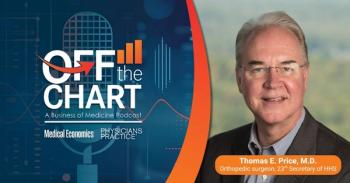
Why There’s a Decline in Doctor’s Visits
Patient visit data raises two key questions: why the decline, and exactly how concerned should practices be?
Consistent with the last few years, practices have experienced a small decline in patient visits over the last 12 months, according to multiple studies.
A report released
“I don't think we'll see the same utilization patterns again," Michael Thompson, a Ne/w York-based principal for PwC's Global Human Resources Division, told American Medical News. "Healthcare is not free anymore. That has an impact on how people are engaging the system."
It’s understandable that higher insurance premiums coupled with a depressed economy would keep patients from visiting physicians, but what does the latest data mean for your practice?
For one thing, primary-care providers should brace for seeing sicker patients/ According to experts, people are more prone to wait until they have an urgent health problem before they see a physician.
State medical groups, associations, and practices are coming up with some creative ways to keep patient visits up.
One story that caught our eye this morning chronicled the state of Connecticut’s efforts - made possible by a partnership between the Connecticut State Medical Society Independent Practice Association and the Connecticut State Medical Society - to form
The co-op would use profits to lower premiums, improve benefits, and improve the quality of members' healthcare. According to a fact sheet on www.healthcare.gov, the
The co-op will seek to control costs by using the "medical home" model, in which each patient has a personal physician to oversee and coordinate visits to specialists, tests and other aspects of care. HealthyCT will be created using the knowledge of the physicians organizing it about where to find efficiencies and cut waste, David D. Thompson Jr., head of the Connecticut State Medical Society Independent Practice Association, told The Day Connecticut.
"That's exactly why these two organizations are doing this," Thompson said. "We're always being told that if we want to have a say in how things are done, we need to do it ourselves. We want to be able to design a health insurance program in a way we think is better."
Let us know what you think. How big of a problem are declining doctors’ visits? What can a practice do about it? Post your response below.
Newsletter
Optimize your practice with the Physicians Practice newsletter, offering management pearls, leadership tips, and business strategies tailored for practice administrators and physicians of any specialty.




